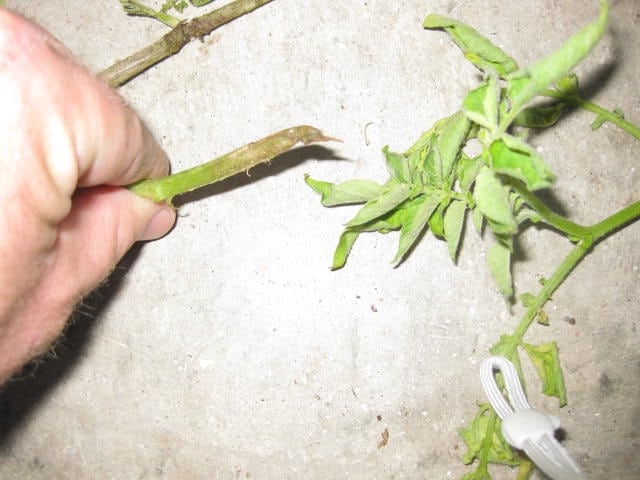Updated: September 2, 2020
I have potato problems. Unfortunately, I’ve been losing two or three potato stems a day. Something has been chewing them off below the dirt line where I’ve mounded soil around the plants.
All in all, I’ve lost about eight stems over three days. If this keeps up, I worry that I’ll have serious potato problems.
The good news is that the damage has been confined to one section of potatoes. The potatoes themselves don’t seem to have been damaged.
Are voles causing my potato problems?
The bad news is that damage has been inflicted on both plants in pots and in the ground.
Voles are my first guess at what’s causing the damage. My yard has lots of them. But it could also be mice or insects. I’m not 100% sure.
UNH Extension Educator Alice Mullen responded to the request and said it is either voles or cutworms.
— Suburban Hobby Farmer
Another point of evidence is that today I just found a beet plant that also had been chewed off just below dirt level. The small beet root had bite marks on it and the leaves have been separated from the root.
Let’s take a sec to get the legal words out of the way. This article may contain affiliate links. That means if you click and buy from my partners, I will make a tiny amount of money at no cost to you. This in no way affects my recommendations.
Glycoalkaloids are toxic
It’s surprising that something is eating my potato plants. Potato stems are toxic due to glycoalkaloids. If people or animals eat stems they probably will have a burning sensation in their mouth and become very sick.
That’s why I’m surprised that anything would be eating the stems.
Glycoalkaloids give potatoes their flavor. But green potatoes have too much and will make people sick.
You should NEVER eat a green potato or even cut off the green part and eat the rest. The green is an indicator that the potato has too much glycoalkaloids in the entire potato.
Related: How to store potatoes.
Clearly some bugs are immune to glycoalkaloids because I see cucumber beetles and other unidentified bugs eating the potato plant leaves all the time.
Cooperative Extension Ask the Expert service
I’ve asked the University of New Hampshire Cooperative Extension service what could be causing my potato problems. I’ve also sent pictures.
In my article Organic Gardeners: You Are Not Alone, there’s a link for the Cooperative Extension Ask the Expert service where they answer questions about plant growing problems.
Extension Educator Alice Mullen responded to the request and said it is either voles or cutworms. I know I have both in the garden.
But after considering the information provided by the Extension Service, my guess is voles. The photo of the severed potato stem on the Extension Service website looks very much like my severed potato stem.
Some of the potato stems that were severed are in a pot, which you’d think would rule out voles. But I think voles know to climb up the pots and do their damage. I’ve seen this happen with beets.
The link to the UNH vole information mentions beets as a primary target. The bite marks on the beetroot are at different angles. This is evidence of voles.
Limited options
Unfortunately, my options for defense against voles are limited. At this stage, I can’t put any type of protective barrier around the stems. There are just too many stems.
I have to hope that the stems get big enough before too many get hit. By mounding up the dirt to the point where the stems are small, I’ve created an environment where they can cause damage even to well-established potatoes with plenty of Glycoalkaloids.
Related articles:
Suburban Hobby Farmer is a participant in the Amazon Services LLC Associates Program, an affiliate advertising program designed to provide a means for sites to earn advertising fees by advertising and linking to amazon.com.
